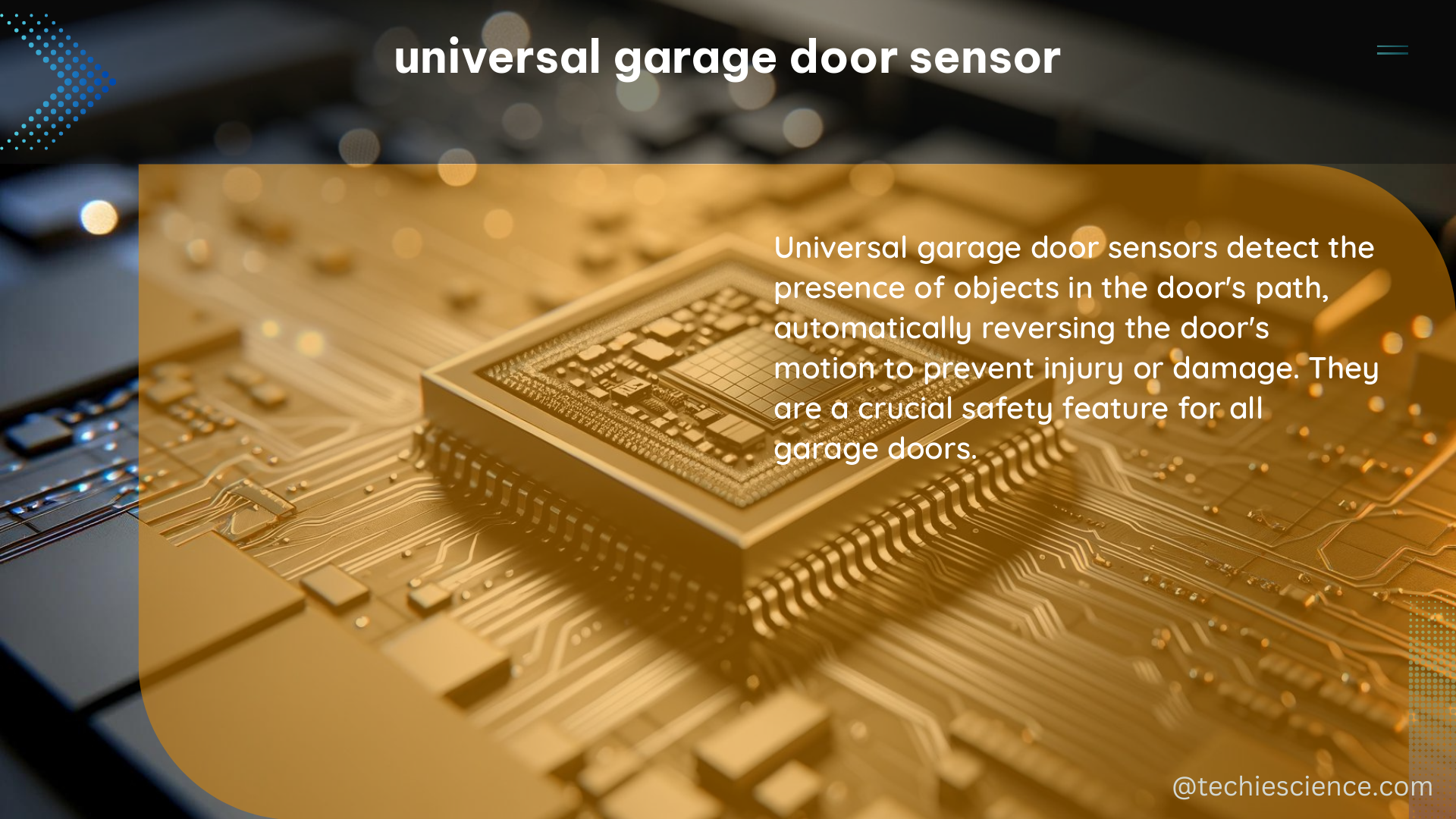The universal garage door sensor, also known as the safety beam sensor, is a crucial component of modern garage door openers. These sensors are designed to prevent the door from closing if an object or person is detected in its path, providing an essential safety feature. This comprehensive guide delves into the technical specifications and inner workings of these sensors, empowering DIY enthusiasts to create custom solutions that incorporate garage door openers while maintaining the essential safety features.
Voltage and Current Specifications
The universal garage door sensors typically operate on a voltage range of 6V to 12V DC, which is supplied by the garage door opener’s control board to the sensor terminals. When the sensor terminals are shorted together, a current of approximately 60mA flows through the circuit. This current is limited by a resistor in series, preventing a short circuit when the terminals are connected.
| Specification | Value |
|---|---|
| Voltage Range | 6V to 12V DC |
| Current (Terminals Shorted) | ~60mA |
Opto-coupler and Emulation

An opto-coupler can be used to emulate the light beam of the sensor, allowing the garage door opener to function without the actual sensors. This method is particularly useful when incorporating a garage door opener into a custom project, such as a bicycle hoist. By using an opto-coupler, the DIY enthusiast can create a compact and efficient solution that mimics the behavior of the original sensors.
Pulse Timing and Obstruction Detection
The garage door opener uses pulse timing to determine if the beam is obstructed. The oscilloscope work reveals that the absence of these pulses causes the opener to reverse the door to the open position automatically. This pulse timing mechanism is a crucial safety feature, ensuring that the door immediately stops and reverses if an obstruction is detected.
Microcontroller Integration
An ATTiny85 microcontroller can be used to create a compact standalone unit that emulates the “all clear” signal and allows the opener to function without the actual sensors. This microcontroller-based solution provides a flexible and customizable approach to integrating garage door openers into various projects.
Power Supply and Capacitor Requirements
The universal garage door sensor can be powered by a 5V DC power supply, such as a 7805 voltage regulator, which can be connected across the ~6.4V supply provided by the opener’s safety sensor terminals. Additionally, the usual capacitors, including a 10uF capacitor across the Bat and Gnd pins, are required to keep the system running while the power is shorted.
| Component | Value |
|---|---|
| Power Supply | 5V DC (e.g., 7805 voltage regulator) |
| Capacitor (Bat to Gnd) | 10uF |
FET-based Emulation
A MPF102 field-effect transistor (FET) can be used to create the compact standalone unit that emulates the “all clear” signal. By utilizing a FET, the DIY enthusiast can design a simple and efficient circuit that mimics the behavior of the original sensors, allowing for seamless integration with the garage door opener.
Conclusion
The universal garage door sensor is a complex yet essential component of modern garage door openers. By understanding the technical specifications and inner workings of these sensors, DIY enthusiasts can create custom solutions that incorporate garage door openers into their projects while maintaining the crucial safety features. This comprehensive guide has provided a detailed overview of the voltage, current, opto-coupler, pulse timing, microcontroller, power supply, capacitor, and FET-based aspects of the universal garage door sensor, empowering readers to tackle their own garage door automation projects with confidence.
References:
– Programming Question: ZWave Garage Door Opener
– Garage Door Opener Safety Sensor Emulation
– Bypassing/Emulating Garage Door Opener Safety Sensors
– Pico W Garage Door Sensor
– MyQ App Says Misaligned Sensors, but the Sensors are Fine

The lambdageeks.com Core SME Team is a group of experienced subject matter experts from diverse scientific and technical fields including Physics, Chemistry, Technology,Electronics & Electrical Engineering, Automotive, Mechanical Engineering. Our team collaborates to create high-quality, well-researched articles on a wide range of science and technology topics for the lambdageeks.com website.
All Our Senior SME are having more than 7 Years of experience in the respective fields . They are either Working Industry Professionals or assocaited With different Universities. Refer Our Authors Page to get to know About our Core SMEs.